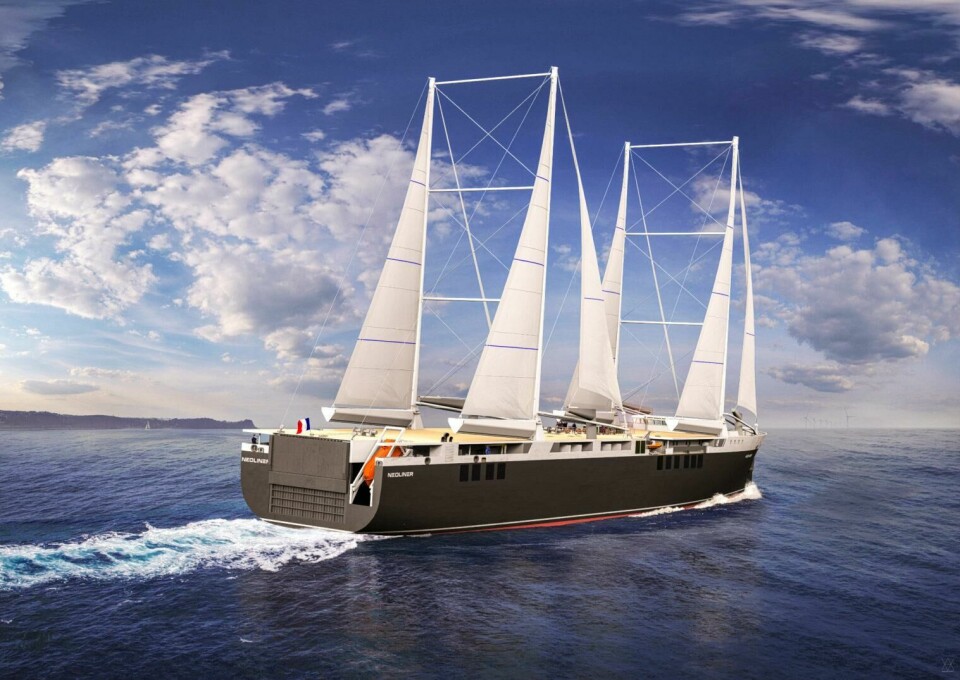
Shipping lines and OEMs invest to decarbonise shipping
Despite being a relatively efficient way to transport cars and parts, shipping still produces a lot of pollution. However, positive steps being made to clean up the process with advances in fuels and technologies, even if a true solution remains elusive.
Vehicle makers do not just need to reduce the emissions their cars produce but also the pollution caused by their supply chains. While the maritime shipping industry has started to clean up its act, the sheer volume of cars and automotive components that need to be loaded onto ocean vessels and transported across the globe means it is still a dirty business.
Low-sulphur fuels have gone some way to reduce the damage cargo ships cause to the environment but because of their size, weight and the distances they need to be able to travel without refuelling, solutions for actual zero-emissions are a long way off. Nevertheless, the industry is travelling in the right direction.
Ways to drastically reduce CO2 and nitrogen oxide (NOx) emissions, or switch to different fuels, would have been laughed at only 15 years ago, according to Professor Stephen Turnock, head of civil, maritime and environmental engineering at Southampton University. His colleague, Professor Dominic Hudson, professor of ship safety and efficiency, adds that the International Maritime Organisation (IMO) only started having serious discussions about emissions around 2007, introducing a cap on the sulphur content in fuel from 2010 and tightening it in 2020.
The problem with a lot of maritime at the moment is… that they want something they can burn in an internal combustion engine. That’s what they know, that's what they understand, and that [requires] the smallest shift in technology – Professor Dominic Hudson, Southampton University
The Paris Agreement on climate change pushed the IMO to issue a statement with tougher guidelines for ocean shipping. Hudson explains: “That IMO statement is really what drives a lot of the bigger shipping companies or owners, or those who wouldn’t move. There are always those who move voluntarily but a lot of them won’t, so you need a statement from the regulator.”
Today, shipping companies are tripping over each other to announce initiatives to reduce their emissions. In February this year Wallenius Wilhemsen presented the Orcelle Wind, a concept for wind-powered ocean transport. The company is confident it could become a reality by 2025. Many others are switching vessels to biofuels and liquefied natural gas (LNG), while some including UECC and Grimaldi, invest in hybrid power.
Bridging fuels and batteries
Most will concede, however, that biofuels, LNG, compressed natural gas (CNG), and hybrid power are not, ultimately, the solution, as they still involve burning a lot of fuel and pumping emissions into the air. Michael Maass, vice-president of sustainability solutions sea at Kuehne + Nagel, sees LNG as a bridging fuel to something better because it still leaves 85% of the CO2 emissions out there and produces methane.
Daniel Gent, energy and sustainability manager at ro-ro shipping line UECC, also sees LNG as a bridging fuel, adding that it will allow for carbon neutral transport in 20-30 years’ time, in combination with other fuels including biofuels. Maass echoes that thought, adding that e-fuels, also called synthetic fuels, such as hydrogen ammonia or ethanol, will have a role to play given the sluggish way battery technology for the shipping industry is evolving.
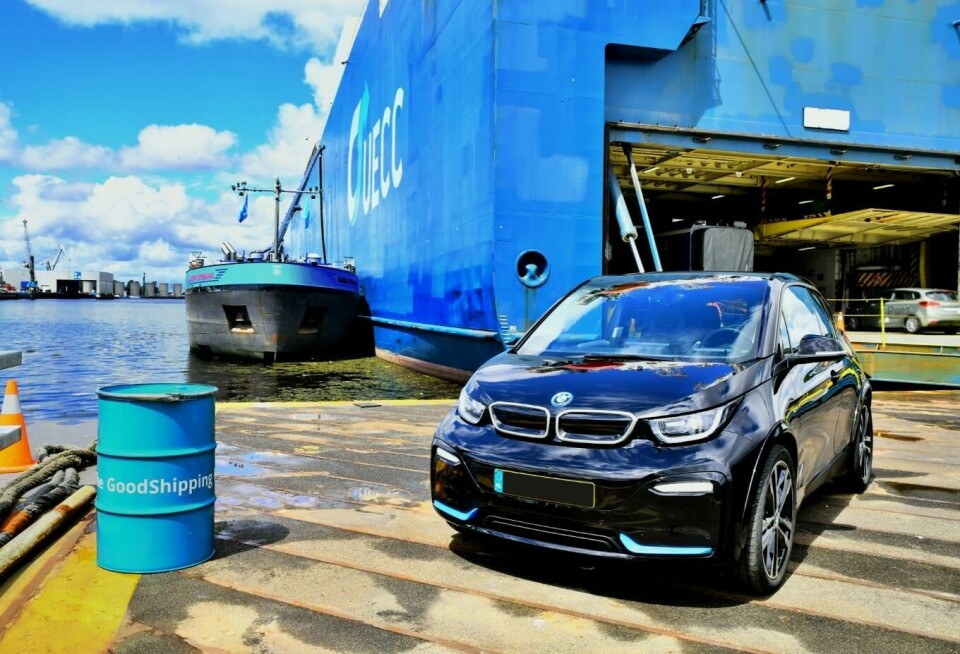
Gent explains that bulky batteries are not the answer just yet: “We’re still a little bit away from having electric propulsion on our ships. One of the issues that we have is that our type of ships – vehicle carriers – really have to max out the space that they have. We’re not really weight limited; we run out of space before we run out of weight.”
While the automotive industry has more or less settled on electrification and battery power to solve its emissions problems, the shipping industry that carries those cars and parts is still waiting or looking for a workable solution. “I think the difficulty at the moment is the interplay between the long-term and the short-term goals,” explains Hudson.
Incentives to invest
Hudson says that achieving a 25% emissions reduction by 2030 on new-build ships is eminently achievable with today’s technology. However, the IMO’s 2050 target to reduce greenhouse gas emissions by 70% compared to 2008 will require much more investment. That needs to start now but shipowners are putting this off as there is currently a lack of incentive to invest heavily in sustainable technology.
Hudson says it is the large carriers that will need to take the lead on innovation and decarbonisation, as the R&D does not make economic sense for smaller shipping companies. It is also up to the carmakers to exert pressure on them to do so.
We have had some paradoxical situations where manufacturers [have] requested us to speed a certain shipment of product to a destination [despite]… the increased carbon impact… but the next day we’re asked the question, what we are doing to improve sustainability in the supply chain – Craig Jasienski, (formerly) Wallenius Wilhelmsen
Hydrogen fuel cells are looking like the eventual solution, but as they require big structural changes, both on the ships and at the ports, as well as a move to large-scale production of green hydrogen, the change is not coming tomorrow. Hudson says: “I think the problem with a lot of maritime at the moment is… that they want something they can burn in an internal combustion engine. That’s what they know, that’s what they understand, and that [requires] the smallest shift in technology. So biofuels look very attractive, burning ammonia looks quite attractive, potentially burning hydrogen looks relatively attractive.”
Burning biofuels
Indeed, ro-ro carrier UECC has been adding dual-fuel vessels to its fleet since 2016. These ships can run on conventional oil or LNG and achieve a 20% cut in CO2 compared to conventional equivalents. Later this year, the company will take delivery of the first of three new dual-fuel hybrid vessels, which can use electric power to perform the high-power manoeuvring needed in port, lowering emissions and minimising local pollution. While fully electric ships of this size are not even on the horizon, electric power is already suitable for such peak shaving, also called load levelling.
For the last year, UECC has also run a trial to power its 20-year-old Autosky vessel on biofuels, which it says has yielded an emissions reduction of 60%. The fuels are sourced from GoodFuels, which blends waste oils including cooking oil.
Although Kuehne + Nagel doesn’t operate vessels itself, biofuels and natural gas are key to its carbon reduction programme. Its SeaExplorer platform lets customers choose the most environmentally responsible service that matches up with their demands. It also operates a scheme it calls Mass Balance, which secures a certain volume of biofuel to be used for shipping. Container vessels may still use heavy oil but the required volume is used in another vessel on a route where biofuel may already be viable. Ultimately, both the biofuel and the traditional oil are still burned, so this cannot be the real solution either.
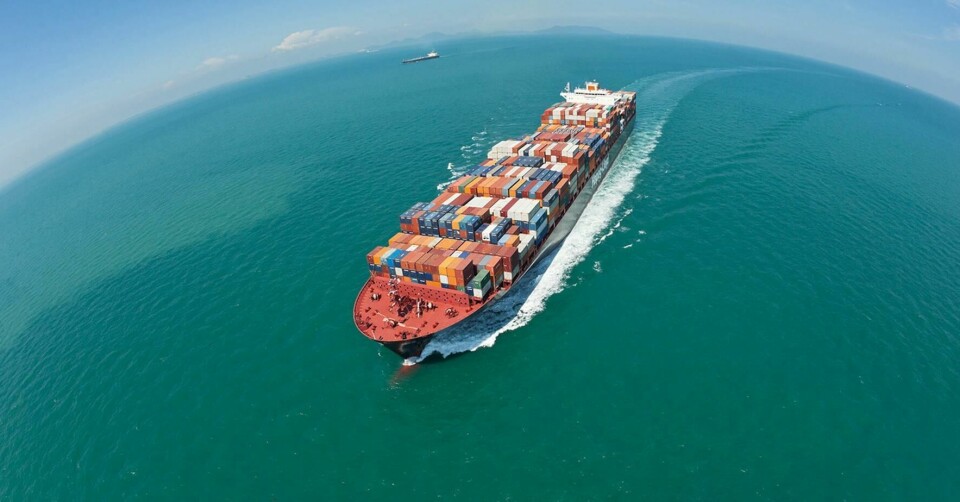
For biofuel to be truly viable, even just as a bridging technology, it needs to have a sustainable origin. UECC’s Gent says: “First of all, we have a sustainability criterion… [.] It always has to come from a waste or residue stream. That means that you know it has no higher purpose other than to be a waste or a fuel. On top of that, we also have to make sure that the feedstock for it has no competition with food production.”
He adds that the biofuel from provider GoodFuels is certified by ISCC, a sustainability certification system for the supply chain, and the Roundtable on Sustainable Biomaterials (RSB), which focuses on biofuels in particular.
“It’s about how you’re getting your biofuel,” Hudson concurs. “If you’re coming up with some clever new system to use algae or plankton from the sea, that actually might be a good long-term solution, but if you’re if you’re talking about land-based biofuels, then the land uses are too important for other things.”
Even with biofuels from waste or sustainable crops, Gent concedes that there are limits to how far it is possible to scale up biofuel usage, as it would be impossible to source enough sustainable biofuel for the thousands of vessels sailing the world’s seas. Even before that, demand would price biofuels out of the market. Hudson adds that biofuels are close to the only viable solution for aerospace at the moment, an industry that is likely to pay more for it than the ocean transport sector.
Push and pull
Sustainability is not cheap as a general rule, which complicates things in spite of the fanfare that surrounds it. During the ALSC North America conference held in February this year, Susanne Lehmann, director of production for the North American region at Volkswagen de Mexico said the company had been shifting transport away from road and air to sea and rail where possible. VW has also been working with Siem Car Carriers to use more LNG vessels.
However, she also said: “I have to convince everybody to also have the right pricing, in cooperation with those measures, so we cannot just say ‘okay, let’s save the world and spend all the money’. There has to be a balance between the pricing that we actually have and the pricing that we will have applying those measures.”
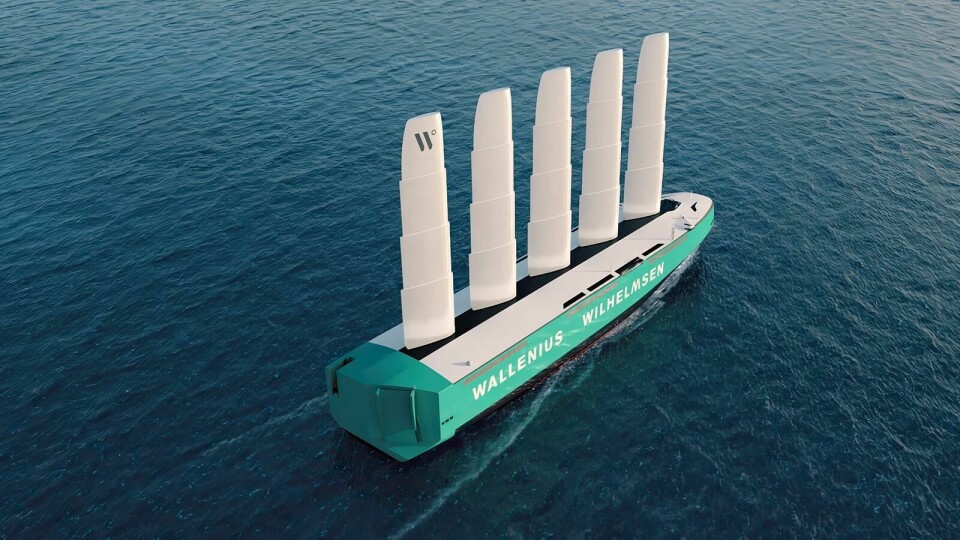
Like Volkswagen, Renault has signed up to The Paris Agreement and aims to make its operations carbon neutral by 2050. The French carmaker is looking to adjust the energy mix for its transporters, switching modes to rail and sea where possible, and reducing the total distance travelled for every cubic metre of cargo through flow optimisation and truck and container filling rate improvements.
Florence Ughetto, sustainable logistics expert at Groupe Renault, explains how the company is working with its ocean transport providers: “We have initiated longer-term contracts with some of our suppliers. This will enable the concerned shipping line to invest in sustainability initiatives – investments to decarbonise their vessels. Before each tender a sustainable evaluation of each shipping line is done. This sustainable criterion has the same weight in the final quotation as other criteria such as quality, cost, lead time and operations efficiency.”
However, according to the shipping companies, that is not always how it goes. Craig Jasienski, who recently stepped down as CEO of Wallenius Wilhelmsen, told Automotive Logistics that there is strong interest in the car sector to improve supply chain sustainability. Nevertheless, he feels that Wallenius Wilhelmsen is pushing it more than it is being requested by the vehicle manufacturers. He says that sustainability is a ‘fourth dimension’ that is still often missing from the supply chain, with cost, quality and speed remaining the main drivers.
“We have had some paradoxical situations where we had some manufacturers who requested us to speed a certain shipment of product to a destination. We’ve transparently and knowingly explained to them what the increased carbon impact would be through that decision, but yet we’ve still been requested to execute that,” he explains. “So, we did that, but the next day we’re asked the question what we are doing to improve sustainability in the supply chain.”
At UECC, the experience has been similar and Gent says there is a disconnection between talking about sustainability and awarding business based on that criterion. The trouble, he says, is that it is hard for many companies to internally put a price on carbon, and awarding business to more sustainable suppliers can end up looking like a wasteful goodwill gesture.
Regulatory help
UECC would support regulatory incentives, such as an emissions trading scheme similar to the one used in the power generation industry, or for the CO2 fleet pooling between OEMs in the EU. Gent does say that authorities would need to take care not to set any carbon price too low, as that would allow polluters to just pay it and carry on.
A similar warning comes from Jasienski, who is also in favour of something like a carbon tax, but he says that previous blanket measures, such as reducing the speed across the board, sometimes ends up penalising operators that have already invested in cleaner technology.
The thing that would force change would obviously be some form of carbon tax. That would concentrate minds and provide more of an incentive to move to cleaner fuels because it will start to become more cost effective, but that’s really, really difficult to do – Professor Stephen Turnock, Southampton University
Ughetto agrees: “All regulation around speed limitation and around low emissions in port should help. But we do believe companies that decide to invest in cleaner vessels should receive some fiscal incitation as for road transport. This is a good way to accelerate decarbonation.”
While such a scheme would be doable within the EU, it would be a lot more complicated on a global scale. “The thing that would force change would obviously be some form of carbon tax,” says Turnock. “That would concentrate minds and provide more of an incentive to move to cleaner fuels because it will start to become more cost effective, but that’s really, really difficult to do.”
Hudson adds that any global effort needs the IMO behind it: “Even stating an ambition has made a big noise within the maritime industry.”
The other regulatory issue that needs addressing is classification. At the moment, a lot of the promising fuels, such as hydrogen and ammonia, are classified as hazardous and therefore banned. While exemptions are available, the IMO, national flag states and classification societies will need to take action in order not to slow progress.
Not just biofuel and prayers
Given the wide variety of routes, and the high cost of some solutions, it looks like there will be a lot of different technologies competing for the time being, and some of them will be for niche markets. Wallenius Wilhelmsen freely admits that its Orcelle Wind car carrier will be a premium offering that will initially be trialled on certain routes where conditions are favourable. Renault is also supporting wind power, having been an early investor since 2018 in the Neoline project, which is developing a wind-powered transatlantic vessel (read more in our interview with Mark Sutcliffe, former senior vice-president of industrial strategy and supply chain management at the RNM Alliance).
Hybrid power, while an essential tool for the automotive industry to reduce emissions from cars, is currently only suitable for operations in port and for peak shaving – allowing the combustion engine to run at a constant load by ‘helping out’ when a lot of power is required. Renault is using a hybrid vessel from Grimaldi to transport cars between Spain and Italy, which it says that reduces CO2 emissions by 39% compared to the previous vessel.
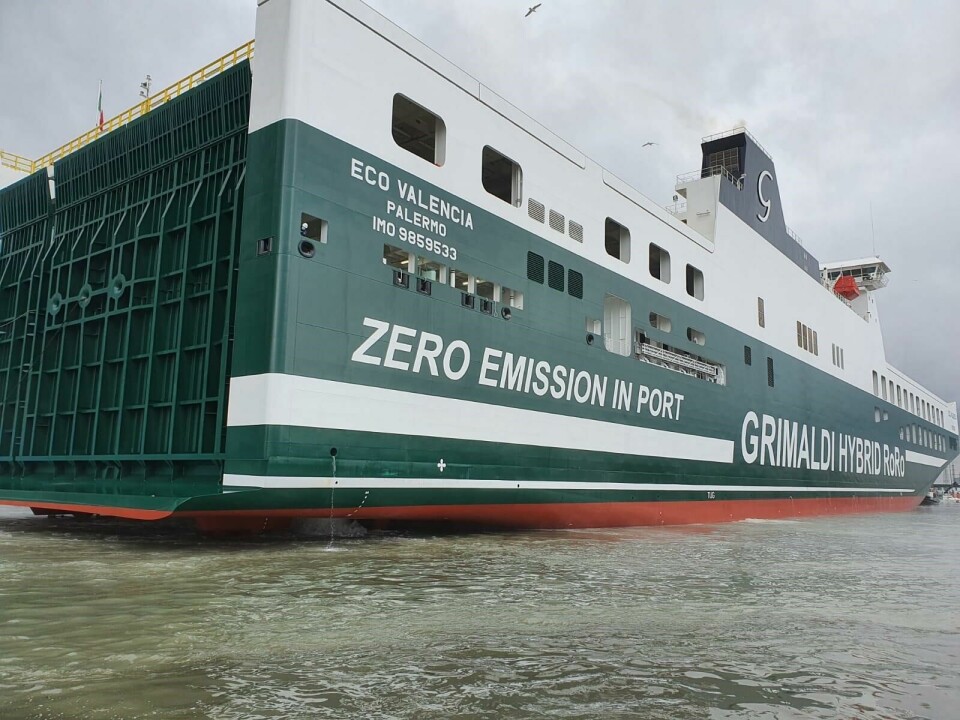
There are still some more operational and detail changes that might yield benefits, including route optimisation, slow steaming, draft and trim optimisation, propellor design improvements, air lubrication (where bubbles are created under the hull to reduce drag) and wind assist systems.
Air lubrication has gained in popularity in the past few years, and Hudson expects that wind assist might follow. However, he reckons most large shipping companies have done most of the operational optimisation they can, while slow steaming is limited in how far it can be pushed without becoming counterproductive.
The LNG route
As indicated earlier, LNG is competing with biofuels as a means to power ships in the near future (if not the long-term future). Siem has been replacing some of the vessels in its fleet with LNG carriers and is using them for the Volkswagen Group. It claims the fuel reduces CO2 emissions by up to 25%, NOx emissions by up to 30%, particulate matter by up to 60%, and sulphur oxide (SOx) emissions by up to 100%. UECC has several carriers that can run on LNG as well.
Hudson says that LNG can indeed be big help in meeting 2030 climate control obligations but it is not the long-term solution. However, Turnock raises another benefit of LNG: “Over the last two years I’ve gone from not really thinking I know what the answer is to starting to think that the hydrogen fuel cell will eventually be the solution. However, to get there, that’s still quite a challenging journey. LNG would be a good route towards hydrogen because some of the infrastructure you need for LNG is likely to be used for hydrogen, and so, there are some lessons that can be learned and some developments that can take place in the meantime.”
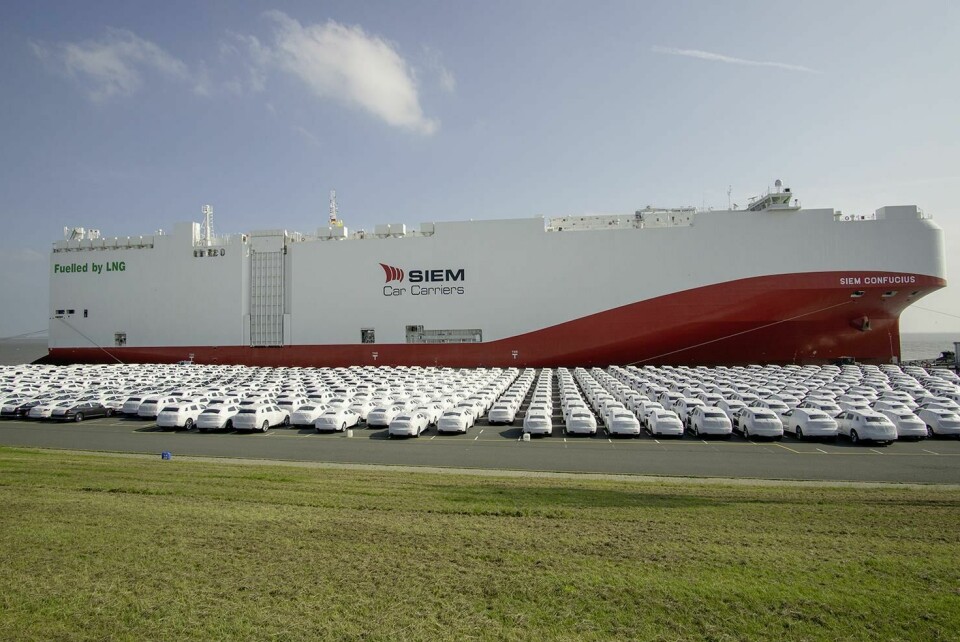
The best way to take emissions out of the transport of cars and components across the world is still unclear. Hudson and Turnock suggest carmakers could do more than simply push the shipping companies to improve. On the one hand, the automotive industry is very good at producing complex systems cheaply and their innovations might feed into shipping.
On the other hand, there is the opportunity to further link up the supply chain. Hudson suggests that ports could become hubs to promote decarbonisation, both on land and at sea.
“There’s an interesting crossover potential around ports, and whether you refill your trucks in ports or whether you refill your ships from trucks in ports. I think there is a crossover in big container ports in particular, where a high percentage of containers are arriving by truck and going on a ship.”
Whatever the solution, the time to act is now, as there have been plenty of announcements and pilot studies. Hudson sums up: “I think it’s really important to see over the next couple of years who actually builds something and puts [it] in the water.”





